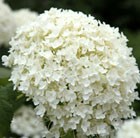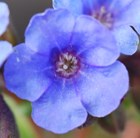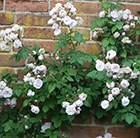New products at Crocus
by Sarah - August 19th, 2009.Filed under: Crocus, New Products.
New lines added today at Crocus

sevenbark £8.99
Position: full sun or partial shadeSoil: moist, well-drained, moderately fertile, humus-rich soilRate of growth: average Flowering period: July to SeptemberHardiness: fully hardyOne of the loveliest hydrangeas, this has huge globes of tightly packed, creamy white bracts that look like giant snowballs in late summer. As autumn progresses, the blowsy flowerheads fade to pale lime and the dark green, pointed leaves turn soft yellow. It has an upright habit and makes a breathtaking feature in a wide, partly shady border, particularly when planted in groups or with other hydrangeas. The flowerheads are a popular choice for dried flower arrangements. Contact with the foliage may aggrevate skin allergies.Garden care: Hydrangeas do not like to dry out. In dry weather, soak the roots with a hose and the plant will usually recover. Remove faded flowerheads in spring after the danger of frosts, cutting back the flowered stems to a strong pair of buds. Take out misplaced or diseased shoots. Mulch young plants with a well-rotted manure or compost in spring. Once established, remove a quarter to a third of the shoots to the base of the plant.

lungwort £5.99
Position: partial shadeSoil: humus-rich, moist, well-drained soilRate of growth: averageFlowering period: March to MayFlower colour: rich blueOther features: dark green leavesHardiness: fully hardyThis piercing blue cowslip bears clusters of rich-blue, funnel-shaped flowers from early to late spring and mid- to dark green leaves. Named after the woodland garden at Munstead Wood created by Edwardian plantswoman Gertrude Jeykll, it is a particularly lovely groundcover plant for moist, shady areas. Garden care: Lift and divide large clumps every three to five years after flowering or in autumn. Cut back plants affected by mildew to the ground, water and feed – the plant will regenerate and produce new leaves later in the year.

rose (shrub) £4.49
Position: full sun or partial shadeSoil: fertile, humus-rich, moist, well-drained soilRate of growth: average Flowering period: June and July Flower colour: pale pinkOther features: excellent cut-flowersHardiness: fully hardyMasses of cup-shaped, fully double, fragrant, pale pink flowers in June and July and mat, bluish-green leaves. This deliciously scented old shrub rose dates back to the 15th century. Upright and arching in habit, it's an excellent pillar rose for an open, sunny border with fertile, moist, but well-drained soil.Garden care: Before planting shorten thick roots to 25cm (10in) and reduce top-growth to an outward-facing bud 8-15cm (3-6in) above ground level. Plant during a frost-free spell, incorporating well-rotted organic matter and a balanced fertiliser into the planting hole. Ensure that the 'bud union' (the bulge at the base of the shoots) is 2.5cm (1in) below the soil.Goes well with: Lamium maculatum 'Roseum', Pulmonaria officinalis 'Sissinghurst White', Chionodoxa luciliae Gigantea Group, Alchemilla mollis, Rosa 'Congratulations', Rosa 'Silver Jubilee'All our roses are field grown. In October/November they are dug up and potted. However, they will not produce any new roots until spring, so don't be suprised if the compost falls away from the roots when winter planting. Some suppliers send out 'bare root' plants unpotted, but we don't as it is easier to manage them on the nursery in pots.






